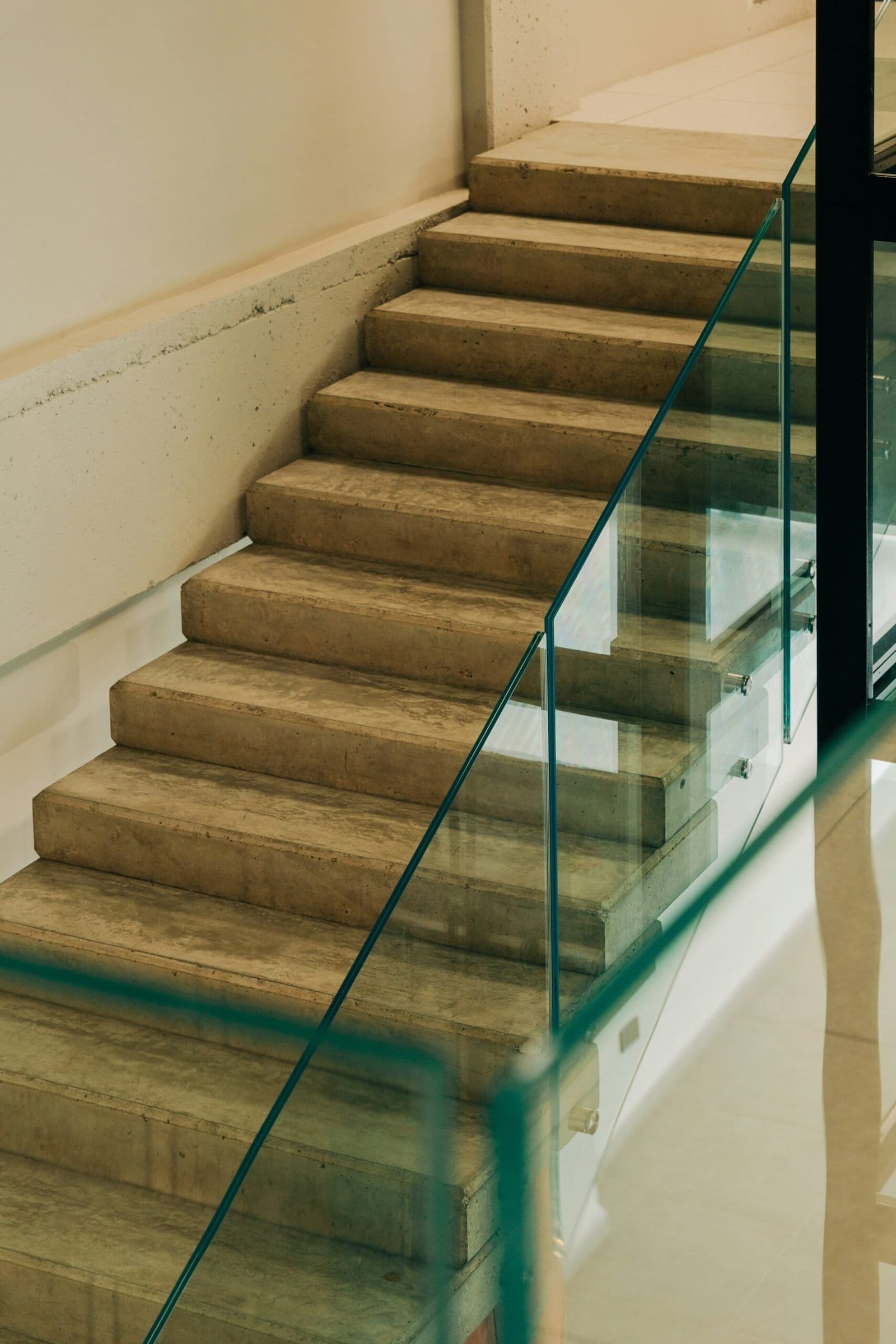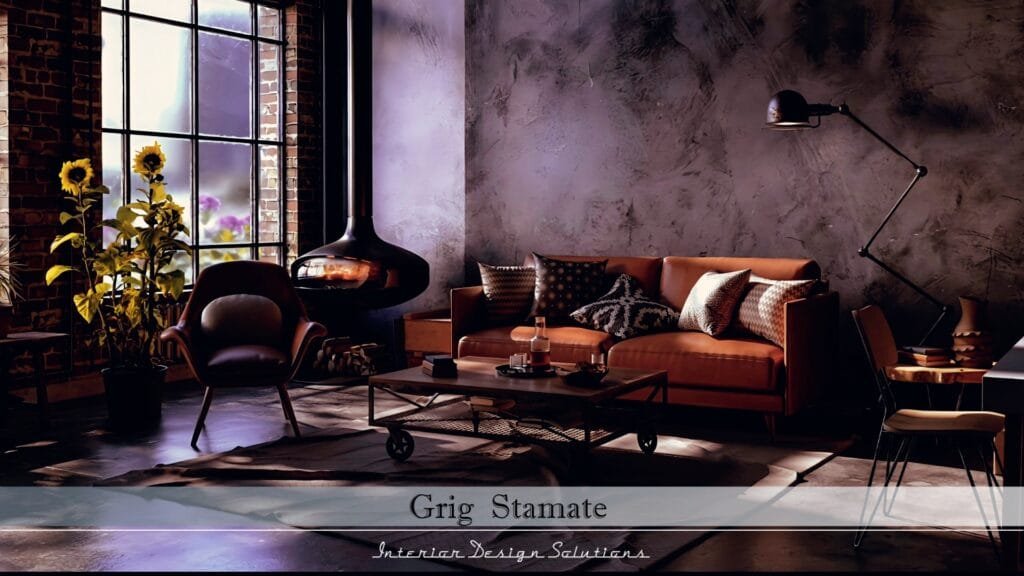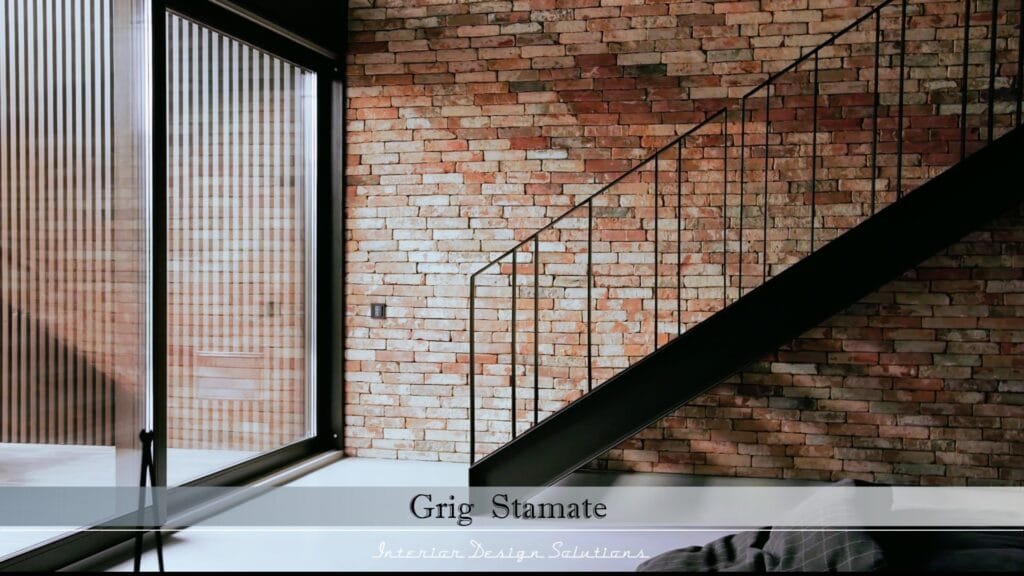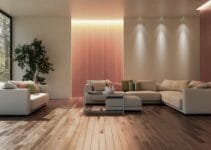Explore the world of industrial design and discover how to transform spaces with a unique blend of materials. This blog post showcases stunning transformations of warehouses into stylish living spaces, highlighting the perfect mix of steel, concrete, wood, and bricks. With over fifty inspiring images, you’ll find ideas to create your own industrial haven. Learn how to balance tough materials with vintage furniture for a warm atmosphere that reflects your personal style. Join the journey of design and let your creativity shine through! Dive into the charm of industrial aesthetics today.
Introduction to Industrial Design
Industrial design is a multifaceted field that merges creativity with functionality, focusing on the development of products that are not only aesthetically pleasing but also practical and efficient. Its origins can be traced back to the late 19th century during the Industrial Revolution when the growth of manufacturing saw an increasing demand for products that could be mass-produced while maintaining quality and design integrity. This era laid the foundation for the principles of industrial design that we see today, emphasizing the importance of balancing form and function.

Key characteristics of industrial design include the use of raw materials, practical layouts, and an open concept approach. This design philosophy often showcases a combination of rugged materials such as steel, wood, concrete, and brick, creating an atmosphere that is both contemporary and timeless. The appeal of industrial design lies in its ability to transform ordinary spaces into dynamic environments. Elements such as exposed beams, unfinished surfaces, and large windows contribute to a sense of authenticity and honesty in the design, allowing the materials to tell their own story.
Please read our article watch the newly uploaded video from our YouTube channel:
“Grig Stamate – Interior Design Solutions”
https://www.youtube.com/@GrigStamate
Fabulous Industrial Design Ideas: Perfectly Blending Steel, Wood, Concrete, and Brick (video)
Here, you can see other related videos from our channel:
Apartment Tour: Sleek Industrial Living Space (video)
Industrial Style Design Ideas | Great Modern Home Interiors #21 (video)
Moreover, the versatility of industrial design enables it to adapt to various settings, whether in residential spaces or commercial establishments. It allows designers and architects to create inviting environments that foster creativity and productivity, which is especially important in today’s fast-paced world. The aesthetic that emerges from blending hard and soft materials can be both striking and inviting, making industrial design a favored choice among many homeowners and businesses alike.
With its rich history and captivating characteristics, industrial design continues to inspire countless creators. The seamless integration of steel, wood, concrete, and brick not only highlights the uniqueness of each material but also enhances the overall ambiance of any space.

The Charm of Reclaimed Spaces
Reclaimed spaces, notably those converted from old factories and warehouses, embody a unique charm that captures the essence of industrial design. These transformed areas offer a narrative of their own, showcasing the history embedded in their walls and the stories that resonate within. The transition from a mere workspace to a stylish living environment reflects a remarkable evolution in architecture and design.
When one enters such spaces, there is an immediate sense of nostalgia. The exposed brick walls, aged wooden beams, and raw concrete accents evoke feelings of a bygone era while still accommodating modern comforts. Each element contributes to a cohesive aesthetic that is both inviting and intriguing. Personal experiences of visiting these sites reveal a profound appreciation for the craftsmanship that went into creating them. For instance, one might remember stepping into a converted textile mill, instantly struck by the soaring ceilings and expansive windows that promote natural light, creating a warm ambiance. Such features are not only functional but also serve as conversation pieces, making these spaces ideal for entertaining.

What further sets reclaimed architecture apart in home design is its inherent sustainability. By breathing new life into old structures, the process respects the environment and diminishes the demand for new materials, which often come with significant ecological footprints. Many homeowners and designers now aspire to integrate elements of reclaimed wood, salvaged steel, and reused bricks, contributing to a sustainable lifestyle while also promoting a sense of uniqueness within their residences.
Ultimately, the charm of reclaimed spaces lies in their ability to fuse past and present, telling a story that can be felt and experienced. The palpable history and distinctive character of these environments continue to inspire contemporary design, establishing them as remarkable examples of industrial heritage celebrated within modern living.
Metal Meets Wood: A Harmonious Blend
The juxtaposition of metal and wood represents a captivating design trend within industrial aesthetics, merging the cold, unyielding qualities of steel with the organic warmth of wood. This harmonious blend not only elevates the visual appeal of a space but also refreshes the contemporary design landscape by introducing a balance that is both inviting and striking. The integration of these materials can create an atmosphere that bridges the past with the present, resulting in spaces that are rich in texture and character.
One compelling design idea is to utilize exposed steel beams in a ceiling while incorporating reclaimed wooden furniture pieces below. This structural contrast highlights both materials, enhancing their individual characteristics. For instance, large industrial light fixtures made of wrought iron can be paired with a rustic wooden dining table to create a focal point within a dining area, creating an inviting space that appeals to both modern and traditional sensibilities. Additionally, the use of wood accents—such as shelves, cabinetry, and flooring—can soften the harsher elements of metal, making interiors feel more cozy and human-centric.
To replicate this aesthetic in your home, consider employing a color palette that allows both metal and wood to shine. Opt for softer hues that complement the warmth of wood while allowing metallic finishes to add a touch of sophistication. When selecting furniture and decor, look for pieces that feature both elements, such as coffee tables with metal frames and wooden tabletops. Incorporating greenery through plants can also enliven the environment, as the natural color of foliage introduces another layer of organic texture to the atmosphere.
Ultimately, embracing this blend of metal and wood can pave the way to a uniquely personalized space. By thoughtfully combining these durable materials, homeowners can achieve a balance that reflects their style, creating an inviting setting that fosters both comfort and inspiration.
Concrete: The Unsung Hero of Modern Design
Concrete, often viewed merely as a construction material, has emerged as a pivotal element in industrial design, reshaping how we perceive and utilize spaces in contemporary architecture. Its versatility is unparalleled, allowing for a broad spectrum of applications that align beautifully with a minimalistic aesthetic. The raw, unrefined essence of concrete brings a unique charm to various settings, from residential homes to urban landscapes.
One of the most compelling attributes of concrete is its durability. This material stands resilient against the test of time and environmental factors, making it an ideal choice for both indoor and outdoor applications. For instance, concrete flooring, with its robust nature, can withstand heavy traffic while providing a sleek, seamless look. Additionally, decorative concrete can be molded and treated to achieve various finishes, including polished, stamped, or stained options, broadening its visual appeal significantly.
The unexpected beauty of concrete lies not only in its physical properties but also in its ability to blend seamlessly with other materials. When combined with elements like wood or brick, concrete creates a striking contrast that enhances the overall design. The smooth surface of polished concrete juxtaposed against the warmth of timber evokes a sense of modern elegance, enriching the character of any space. Moreover, the neutral palette of concrete allows designers to play with colors and textures, fostering creativity and innovation in industrial design.
From concrete walls that embody industrial charm to artistic installations that push creative boundaries, this material’s transformational potential is immense. Its minimalistic allure also resonates with modern sensibilities, making concrete a favored choice for those looking to create stylish, functional environments. As we continue to explore the world of industrial design, it is essential to recognize concrete as more than just a structural element; it is indeed an unsung hero propelling modern aesthetics forward.
Brick: Adding Character and Warmth
Brick is a timeless building material that adds a unique character and warmth to industrial design. Renowned for its durability and versatility, brick seamlessly integrates with other materials such as steel, wood, and concrete, creating a harmonious blend that enhances the overall aesthetic of a space. The inherent texture and earthy tones of brick evoke a sense of history, making it a favored choice for contemporary and rustic designs alike.
Different types of bricks offer various possibilities for expression. For instance, reclaimed brick, often salvaged from historical buildings, introduces a sense of authenticity and nostalgia. Its varied hues and weathered appearance can serve as a stunning focal point in any room, whether used as an accent wall or as part of a fireplace surround. On the other hand, modern bricks, available in an array of colors and finishes, allow for customized palettes that align with contemporary design themes.
When incorporating brick into an industrial setting, consider the balance between materials. Pairing raw, unfinished brick with sleek steel elements can create striking visual contrasts, while complementing wood accents can soften the overall look, inviting warmth into the space. Furthermore, brick can be utilized cleverly to define areas within open floor plans, adding both structure and intrigue.
Inspiring examples abound in urban spaces. Many lofts and galleries utilize exposed brick walls that showcase the architectural beauty of the material, offering a canvas for art and design. Restaurants often feature brick interiors, providing a cozy ambiance that encourages social gatherings. By thoughtfully integrating brick into your design, you can evoke warmth and a sense of history, all while enhancing the industrial aesthetic of your space.
Creating Open Spaces: The Design of Flow
In the realm of industrial design, the concept of creating open spaces is fundamental in achieving a sense of flow and connectivity. Often found in factories and warehouses, vast, unobstructed areas allow for movement and interaction, serving not only functional purposes but also influencing the overall atmosphere. This approach can be effectively mirrored in modern homes, transforming them into open, airy environments that promote both comfort and functionality.
The first consideration in establishing open spaces is to minimize barriers that define partitions between rooms. Instead of walls, think about using large, sliding doors or open shelving that provides separation without disrupting visibility. This layout enhances the overall flow of a space, drawing natural light in from various angles and creating a cohesive feel throughout the home.
Another notable tip is to arrange furniture strategically to foster a sense of openness. Avoid overcrowding areas with too many pieces; instead, select multifunctional furniture that serves multiple purposes, such as a coffee table with hidden storage or a sofa that can be easily rearranged. Additionally, opt for lighter color palettes and transparent materials whenever possible, as they can contribute to an illusion of expansiveness and clarity within the living area.
Incorporating elements such as varied ceiling heights can also enhance the aesthetic of open spaces; higher ceilings give a dramatic effect, even in smaller homes, reminiscent of the vastness found in industrial atellics. Utilizing large windows allows for an abundance of natural light, which is critical in creating a feeling of openness without compromising on style.
Through the thoughtful planning of layouts and furniture arrangements, modern homes can evoke a sense of spaciousness that is both functional and inviting, encapsulating the essence of industrial design. By embracing these design principles, one can achieve a harmonious flow that enhances both daily living and aesthetic enjoyment.
Lighting in Industrial Design
Lighting is an essential element in industrial design, as it not only illuminates spaces but also highlights the unique materials often employed in such environments, such as steel, wood, concrete, and brick. By choosing the right lighting fixtures, one can enhance the aesthetic appeal while also contributing to the overall mood and functionality of the area. A few popular choices include Edison bulbs, pendant lights, and task lighting, each serving a different purpose in the industrial design narrative.
Edison bulbs have gained significant popularity in industrial spaces due to their vintage appearance and warm glow, which complements raw materials like exposed brick and steel beams. These bulbs are often used in clusters, suspended from ceiling fixtures or attached to industrial-style cords, creating an inviting atmosphere. When selecting Edison bulbs, consider varying the brightness and color temperature to achieve the desired ambiance. Dimming capabilities can further enhance flexibility in mood setting.
Pendant lights, on the other hand, can serve as statement pieces or subtle accents in a room. Hanging from ceilings at different heights can create visual interest and depth. Industrial-style pendant lights often feature metal finishes, geometric shapes, or distressed glass, harmonizing well with the overall design theme. When placing pendants, it is essential to consider the scale of the space; larger fixtures can work well in expansive areas, while smaller pendants can be grouped for a cohesive look in tighter spaces.
Task lighting is equally important in an industrial setting, particularly in spaces designated for work or creativity. Fixtures such as desk lamps, wall sconces, and adjustable floor lamps provide focused lighting necessary for completing tasks while enhancing the overall design scheme. Choose task lights that maintain a balance between functionality and style, ensuring that they complement the industrial features without overwhelming the space.
Incorporating Vintage Charm: Decor and Accessories
In the realm of industrial design, the combination of steel, wood, concrete, and brick creates a robust foundation, yet there is significant potential for enhancing these elements with vintage charm. Integrating decor and accessories from bygone eras not only adds warmth but also establishes a distinctive character in your industrial space. Vintage items can range from simple accessories like old books and globes to more intricate pieces such as vintage furniture or art.
Sourcing these unique items can be an adventure in itself. Start by exploring local flea markets, antique shops, and thrift stores, where you can often find one-of-a-kind treasures. Online platforms like Etsy and eBay also provide a plethora of vintage items from sellers around the globe, making it easier to find that specific piece that resonates with your aesthetic. When selecting vintage decor, consider items that tell a story, such as an antique typewriter or a framed photograph from a past era, which can serve as conversation starters while also adding character.
To truly elevate your industrial space, consider how these vintage accessories interact with the raw elements of your design. For instance, juxtaposing a sleek, modern steel table with distressed wooden chairs can create an inviting dining area. Complementing industrial lighting fixtures with vintage lamps further enhances the overall ambiance. Infusing charm through accessories can transform a stark industrial environment into a warm and personalized home. Remember that balance is key; contrasting vintage pieces with contemporary elements can create visual interest without overwhelming the space. Through thoughtful curation and placement, vintage decor can effectively breathe life into an otherwise unadorned industrial setting.
Final Thoughts and Inspirations
Throughout our exploration of industrial design, we have uncovered a variety of innovative ideas that seamlessly blend steel, wood, concrete, and brick. These materials, each with their unique characteristics and aesthetic appeal, come together to form a cohesive and striking design language. The juxtaposition of the raw, rugged nature of steel and concrete with the warmth of wood and the timeless charm of brick not only creates visually stunning environments but also brings a sense of authenticity and homeliness to any space.
As we reflect on the key elements discussed, it becomes clear that embracing the principles of industrial design can lead to truly fabulous results. The versatility of these materials means that they can be customized and adapted to suit individual preferences, ultimately fostering greater personal expression within one’s living or working environment. From minimalist functional spaces to bold statement interiors, the potential applications are virtually limitless.
Moreover, the integration of sustainable and reclaimed materials has garnered increasing importance in modern industrial design. This practice not only aligns with environmental consciousness but also enhances the narrative of spaces, allowing stories of the materials’ origins to enrich the overall aesthetic. As designers and homeowners alike consider their projects, the fusion of sustainability with industrial design principles can result in spaces that embody both style and responsibility.
In embracing these fabulous industrial design ideas, I encourage readers to embark on their own design journeys. Whether you are renovating a room or starting anew, take inspiration from the diverse combinations available and experiment with blending steel, wood, concrete, and brick. These materials harmoniously coexist, inviting creativity and personalization in your home or workspace. With an open mind and a willingness to innovate, your design aspirations can become a beautiful reality.
Other related posts from our website:
Let’s see here, three of them:
https://howtobuildahouseblog.com/apartment-tour-sleek-industrial-style-living-space/
https://howtobuildahouseblog.com/from-rustic-to-refined-industrial-interior-design-ideas/
https://howtobuildahouseblog.com/warm-industrial-living-room-design-ideas/
Thank you so much for your attention.
We also sincerely hope you like our ideas from this post, and you have also enjoyed our uploaded YouTube video.
See you next time at another article. Thank you so much for your time. Bye now!


